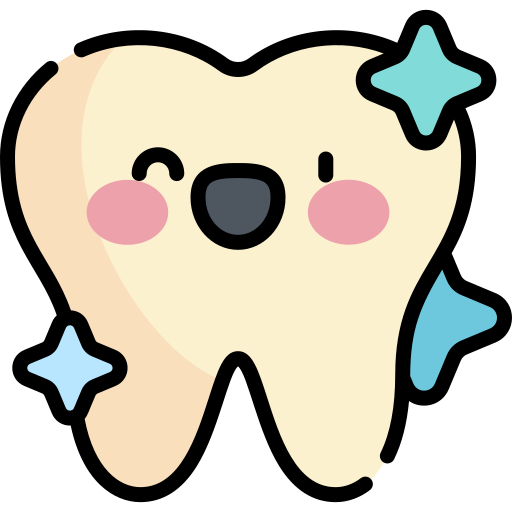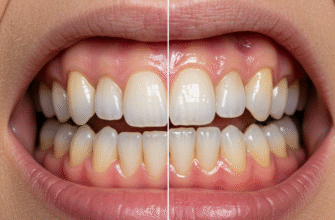Many people believe that when a tooth hurts, the pain stays right there, a simple signal from a troubled spot. However, the reality of dental discomfort is often far more complex. That throbbing ache you feel in your temple, or the persistent soreness near your ear, might actually be your mouth trying to tell you something about a specific tooth. This article aims to unravel the fascinating, and sometimes confusing, ways dental pain can travel, debunking the common myth that all such pain radiates in the same predictable manner.
Understanding Referred Pain in the Dental Context
The phenomenon where you feel pain in one part of your body when the actual problem lies elsewhere is known as
referred pain. This is not unique to dentistry, but the head and neck region is particularly prone to it. Why? Because this area is a bustling hub of interconnected nerves. Your brain, tasked with interpreting pain signals, can sometimes get its wires crossed, leading you to feel discomfort in a location distant from the true source.
Imagine a dense network of electrical wires. If one wire has an issue, the interference might show up in an unexpected part of the circuit. Similarly, nerve pathways in your face and jaw are intricate, and signals can be misinterpreted.
At the heart of facial sensation, including dental pain, is the trigeminal nerve. This is the largest of the cranial nerves and it has three major branches that supply feeling to different parts of the face: the ophthalmic branch for the eyes and forehead, the maxillary branch for the upper jaw, cheeks, and sinuses, and the mandibular branch for the lower jaw, chin, and parts of the tongue.
Because these branches are so extensive and interconnected, an irritation or problem in one area supplied by a branch can send confusing signals up to the brain. The brain might then misinterpret the origin point, leading to the sensation of pain radiating to other areas covered by the trigeminal nerve or even nearby structures. This complexity is key to understanding why dental pain does not always stay put.
Why Not All Toothaches Are Created Equal or Felt Equally
Just as there are many different potential dental issues, the type and location of pain they cause can vary wildly. It is a mistake to assume that a toothache will always present as a sharp, localized pain directly over the offending tooth. The nature of the problem, its severity, and its location all play a crucial role in how and where you perceive the discomfort. Understanding these variations is essential.
Pain Originating from the Pulp or Tooth Inner Nerve
Deep inside each tooth is the pulp, a soft tissue containing nerves and blood vessels. When this pulp becomes inflamed, a condition called pulpitis, pain is a common symptom. In the early stages of
reversible pulpitis, the pain might be sharp but brief, often triggered by hot, cold, or sweet things, and it usually stays fairly localized to the affected tooth. The discomfort is often a direct response to a stimulus.
However, if the inflammation progresses to
irreversible pulpitis or the pulp tissue starts to die (a state known as necrosis), the pain character changes significantly. It can become a spontaneous, throbbing, and more severe ache that lingers, often waking people up at night. This is when radiation becomes very common. Pain from an infected lower molar, for example, might be felt intensely in the ear on the same side, down the jawline towards the neck, or even in other teeth on the same side that are perfectly healthy. An upper tooth issue might cause pain to radiate towards the eye, the temple, or the side of the head.
Discomfort from Gum and Bone Issues
Problems affecting the gums and the bone supporting the teeth, such as a periodontal abscess (a pocket of pus forming in the gums next to a tooth root), tend to cause a different type of pain compared to pulpitis. This pain is often more constant and dull, frequently described as a gnawing ache or a feeling of pressure rather than a sharp, electric shock type of pain.
While a gum abscess might be somewhat localized initially, especially with a visible swelling or pimple on the gum, the associated inflammation and swelling can put pressure on adjacent tissues and nerves. This can lead to a feeling of generalized pressure or a dull ache that spreads to nearby areas of the jaw or face. The tooth itself might feel tender to bite on or touch, and sometimes it may feel slightly raised or loose.
Cracked Teeth and Their Elusive Pain
A cracked tooth, sometimes referred to as cracked tooth syndrome, can be notoriously difficult to diagnose precisely because its pain patterns are so variable and often elusive. The pain is frequently sharp and momentary, occurring when you bite down in a specific way or on a particular cusp of the tooth, as the crack flexes and irritates the pulp.
However, it can also manifest as a dull, intermittent ache that is hard to pinpoint to a single tooth. Depending on the location, direction, and depth of the crack, the pain might radiate to the ear, the temporomandibular joint (TMJ), or even mimic sinus pain if an upper back tooth is involved. Sometimes, the only symptom is a lingering sensitivity to cold temperatures that does not go away quickly after the cold stimulus is removed, or a vague discomfort that comes and goes without a clear trigger.
Wisdom Teeth Woes
Third molars, commonly known as wisdom teeth, are frequent culprits when it comes to radiating dental pain, especially during their eruption phase or if they become impacted. If a wisdom tooth is impacted (meaning it is stuck and unable to erupt properly into the mouth) or only partially erupted, the gum tissue around it can become inflamed and infected. This condition is called
pericoronitis.
The pain from pericoronitis is often intense and can radiate significantly. It is very common to feel pain spreading to the jaw joint, making it difficult and painful to open your mouth wide (a condition called trismus). Earache on the same side is also a very frequent companion to wisdom tooth trouble, as is pain radiating down the side of the neck or into the throat. Swelling in the area of the wisdom tooth can further exacerbate the spread of discomfort and make swallowing uncomfortable.
Sinus Infections Mimicking Tooth Pain
Sometimes, what feels very much like a toothache, particularly in the upper back teeth (molars and premolars), is not a dental problem at all. The roots of your upper molars and premolars are situated in very close proximity to the maxillary sinuses, which are large, air filled cavities located within your cheekbones on either side of your nose.
If you develop a sinus infection (sinusitis), the inflammation and pressure buildup within the sinus cavity can press directly on the nerve endings of these nearby tooth roots. This can cause a dull, persistent, aching pain that feels like it is coming from several upper teeth simultaneously, rather than a single tooth. A key indicator that sinus involvement might be the cause is that the pain often worsens when you bend over, lie down, or jump, as these movements can increase sinus pressure. Other symptoms like nasal congestion, facial pressure, or a postnasal drip might also be present.
The Brain Interpretation Game
Ultimately, all pain, regardless of its origin, is processed and interpreted by the brain. The brain receives a constant stream of signals from nerves throughout the body and tries its best to pinpoint the source of any trouble or abnormal sensation. However, as we have seen, the dense and overlapping nerve pathways in the head and neck region can make this a particularly challenging task for the brain.
The brain essentially makes an educated guess based on the incoming information and past experiences. When signals from an irritated tooth nerve travel along shared pathways with nerves from other facial structures like the ear, sinuses, or jaw joint, the brain might struggle to differentiate the precise origin of the pain signal. Furthermore, individual factors such as your personal pain threshold, previous pain experiences, anxiety levels, and even your current stress levels can significantly influence how you perceive pain, how intensely you feel it, and how it seems to spread.
Why Self Diagnosis is a Bad Idea
Given the incredible variability in how dental pain can present itself and radiate to different areas, attempting to diagnose the problem yourself is not advisable and can even be risky. What you might casually dismiss as a simple sinus headache could, in reality, be a serious tooth infection requiring prompt treatment. Similarly, that persistent earache you are experiencing could actually be a sign of an impacted wisdom tooth needing attention before it causes more significant problems.
Dentists are highly trained professionals skilled in unraveling these painful puzzles. They use a combination of methods: listening carefully to your reported symptoms and pain history, conducting a thorough clinical examination (which includes looking closely at your teeth and gums, gently tapping on teeth, checking for sensitivity to temperature changes), and utilizing diagnostic tools like dental X rays. These X rays can reveal problems hidden below the gum line or inside the tooth. This comprehensive approach allows them to identify the true source of the pain, not just the area where it seems to be felt most acutely. This accurate diagnosis is the crucial first step towards recommending the correct and most effective treatment to resolve the underlying issue, rather than just temporarily masking the symptoms.
Attempting to self diagnose dental pain based on where you think it is coming from can lead to delays in appropriate treatment. Pain that radiates can be a sign of various conditions, some requiring urgent attention. Always consult a dental professional for an accurate diagnosis and treatment plan. Ignoring pain or misinterpreting its source can allow a problem to worsen significantly.
So What Is The Takeaway
The old notion that tooth pain is always a straightforward, localized affair simply does not hold true for many people. Dental pain can, and often does, radiate in complex and sometimes surprising ways, making its source difficult to immediately identify. This is not a flaw in our bodily design but rather a natural consequence of the wonderfully intricate network of nerves that serves our head and face.
Understanding that pain originating from a tooth can manifest as discomfort in your ear, jaw joint, temple, sinus area, or even feel like a generalized headache is important. It helps explain why sometimes the source of discomfort is not immediately obvious even to the person experiencing it. While it is good to be aware of your body and pay attention to its signals, it is paramount to always rely on the expertise of a dental professional to accurately diagnose and treat any dental pain you experience. Do not let a travelling pain lead you down the wrong path for relief; seek professional guidance to ensure you address the root cause of the problem effectively.








